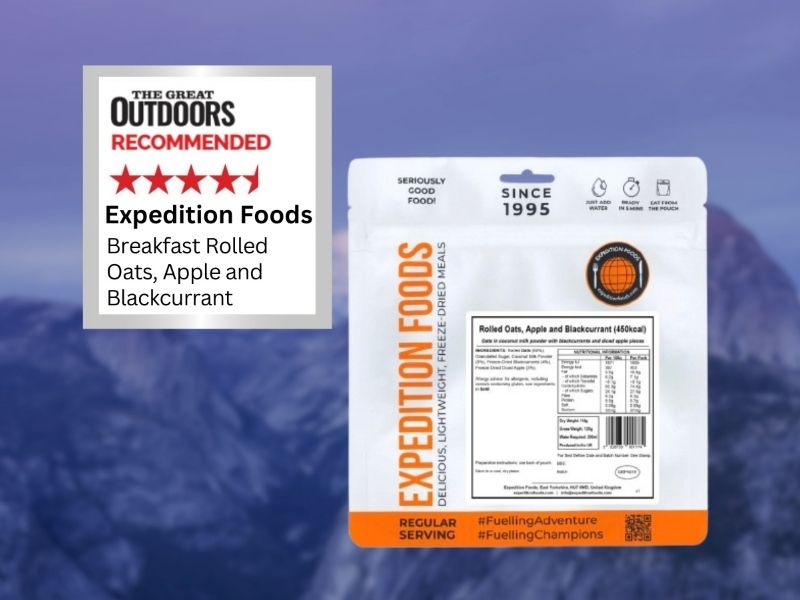-
Shop All
-
Ration Packs
-
Special Diets
- 25-Year Tins
-
Snacks, Drinks & Accessories
- About Us
A POLAR EXPLORER TAKES ON THE SAHARA RACE
May 24, 2018
Although Dr. Ollie Stoten confesses to having never liked the cold, the idea of crossing Antarctica was one he couldn’t get out of his head.
“I wanted to be involved after hearing a talk from Dr Mike Stroud about his journey with Sir Ran Fiennes. Their journey sounded so incredibly difficult and a real test of courage in such a harsh environment,” Stoten said.
Stoten applied and was then selected to be part of SPEAR17 (South Pole Expedition Army Reserves), a team of British Army Reservists who, in January 2017 completed a 1,100-mile crossing of Antarctica.

A junior doctor in Bournemouth, Stoten came to study medicine after studying Earth Sciences while working for an airborne unit in the Army Reserves. His military background inspired his athletics pursuits as well -- having trained for the Army, he wanted to apply this in a civilian context and he began to enter ultramarathons.
Originally SPEAR17 was set to attempt a 730-mile expedition from the edge of the Antarctic continent to the South Pole. While the expedition’s leader had previously completed a polar journey with Henry Worsley, the rest of the team were novices. As SPEAR17 was in the final stage of selection in Arctic Norway, Worsley was attempting to traverse Antarctica solo, but unfortunately passed away before finishing the expedition. SPEAR17 decided to add a second leg onto the trip from the South Pole, meaning that the journey would now be 1,100 miles going from the Ronne Ice Shelf to the Ross Ice Shelf via the South Pole.
Training for the expedition involved improving a lot of basic strength and movement patterns. Stoten ran a full season of ultramarathons and then two months before starting the expedition, he focused on strength, power and gaining muscle.
“Antarctica was an incredible place,” Stoten said. “It feels like one of the few truly wild places left on earth. We would ski for hundreds of miles without seeing any signs of life. It can be so bitterly cold, down in the -60s centigrade with wind chill, especially up on the polar plateau at 10,000ft, or it can actually be quite mild and nice weather at lower altitude near the coast where you can quite happily ski in the sun with just a thermal top. Needless to say most of our journey was up high and in the bitterly cold weather.”
As a team, Stoten felt the dynamic worked really well, saying that each member of the team was able to use his strengths effectively.
“We wouldn't communicate much during the day because the weather was too harsh and we were working hard, but each time we crossed a degree of latitude we'd all get in Lou and my tent, nicknamed 'The Ritz', and have a social evening, play cards and generally have a laugh at each other's expense,” Stoten said. “There were no fall outs of big arguments during the expedition which was amazing given the pressure and confinement!”
With an interest in sports nutrition, Stoten took on the job of planning all the nutrition, balancing the amount of energy required for the expedition along with the fact that the would be dragging everything they needed pulks. Stoten researched energy estimates and eventually decided on a caloric intake of 6,500kCals.
“I didn't mind people being in a slight calorie deficit for the expedition, but didn't want the huge weight loss seen so frequently in our predecessors as this always led to a reduction in strength, work capacity, immunosuppression and some deadly consequences,” Stoten said. “Each of the 3.5 million calories we took was carefully planned, checked, recorded and analysed in conjunction with extensive metabolic analysis in the Human Metabolic Research Unit in Coventry for some research papers that we are finalising.”
The team relied on the Expedition Foods for high-energy freeze-dried meals, which were paired with calorific snacks. Breakfast was porridge and hot chocolate and snacks during the 10-12 hour day would include chocolate, nuts, salami and cheese. Once the day was done the team members would have a recovery drink from CNHP and then the evening meal were freeze-dried dinners and puddings, often with extra butter melted in.

“All of the curries went down very well, as did the spaghetti carbonara and bolognese. I often added some salami and cheese reserved from our snack bags to the pasta dishes to make an unbelievably calorific and delicious dinner!” Stoten said.
Stoten will again turn to Expedition Foods as he competes in his first 4 Deserts / RacingThePlanet race at the Sahara Race (Namibia) 2018.
“My time in Antarctica is clearly very different to Namibia, in the length, style of expedition and obvious climatic differences, but I know I enjoy getting up each day and having long days ahead on my feet and don't mind roughing it in between,” Stoten said. “I know I also love the Expedition Foods freeze-dried meals and can't wait to use them again, and have used similar principles for planning my nutrition, just focused on much higher proportions of carbohydrate.”
With the Sahara Race (Namibia) one of his early season races, Stoten has focused on his running, with a mix of shorter efforts and longer days.
“There are a lot of fast and very experienced people running the Sahara Race and I don't expect to be up the front with them,” Stoten said. “I'm heading out there to enjoy myself (in a weird sort of way), have an adventure, and really see how I get on. It’s very early in the running season for me and I haven't focused my training for this race, so I don't expect to on peak performance, but think I have got enough in the tank to do a reasonable job.”
The Sahara Race (Namibia) is just one of Stoten’s goals. While he doesn’t have a so-called bucket list, Stoten said there is a lot he’d like to do -- including more of the 4 Deserts Race Series.
“I would really love to spend more time trail running in the mountain, and am craving a visit to the Alps. I'd also really like to run in the Atacama Desert, so I have the 4 Deserts race on my radar! I'm also tempted to move somewhere I can learn to cross country ski and that would be great training for going back to Antarctica for a speed record.”
Also in Stories

Eat, Paddle, Sleep, Repeat: Life on the Yukon 1000
November 06, 2025
Firsthand account of completing the Yukon 1000 in 7 days; what we ate, packed, and learned about food, sleep, and self‑reliance on the river.

Expedition Foods Breakfast Earns Praise from The Great Outdoors Magazine!
September 29, 2025
We’re proud to have received a glowing review for our plant-based breakfast, Rolled Oats with Apple and Blackcurrant, that’s not only nutritious and delicious but also mindful of dietary needs and environmental impact.

Rowing Across the Mediterranean with NOMAN
May 16, 2025
40 degree heat, sea swells, salt sores, blisters, dehydration, sea sickness… The decision to take on the adventure of rowing across the Mediterranean is not one that is taken lightly.

